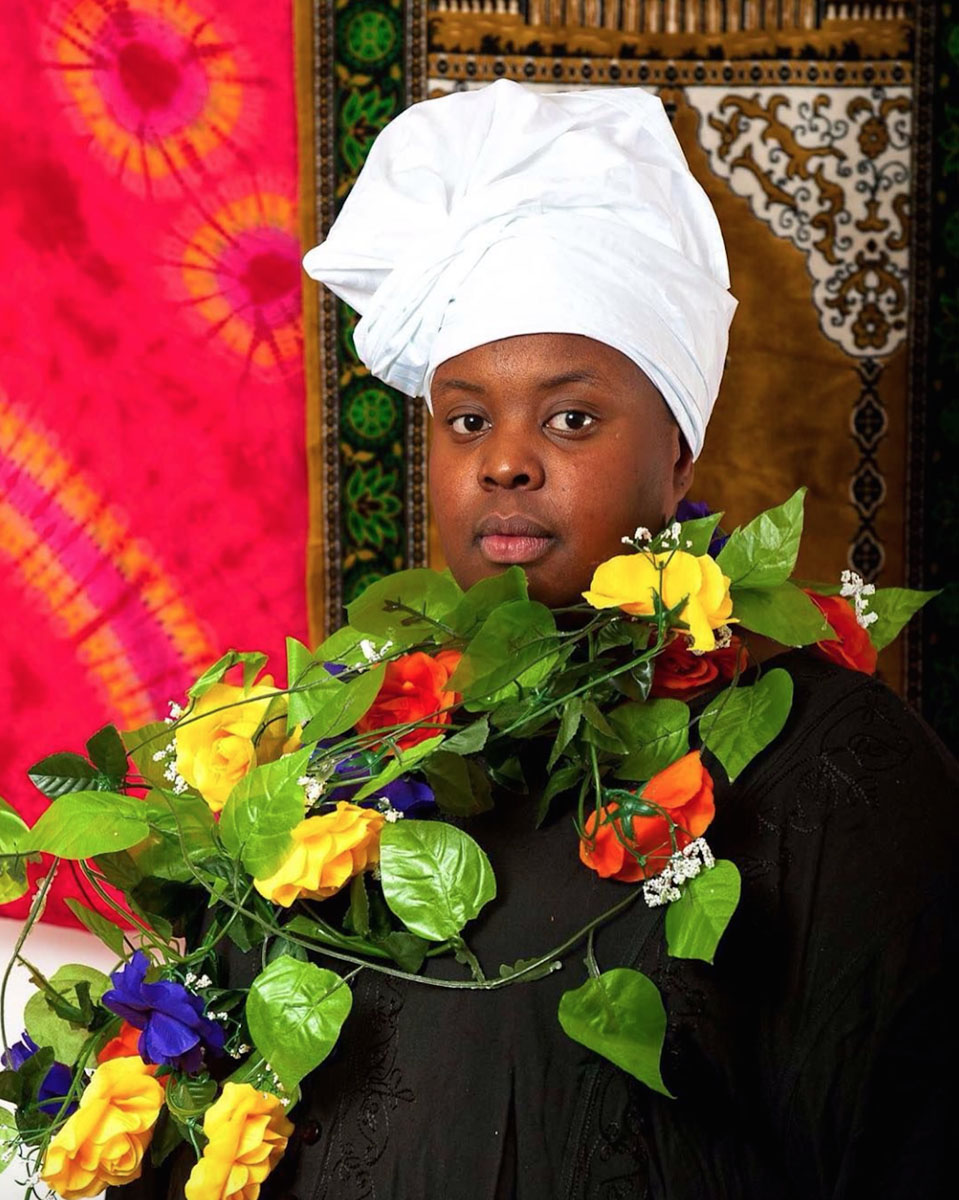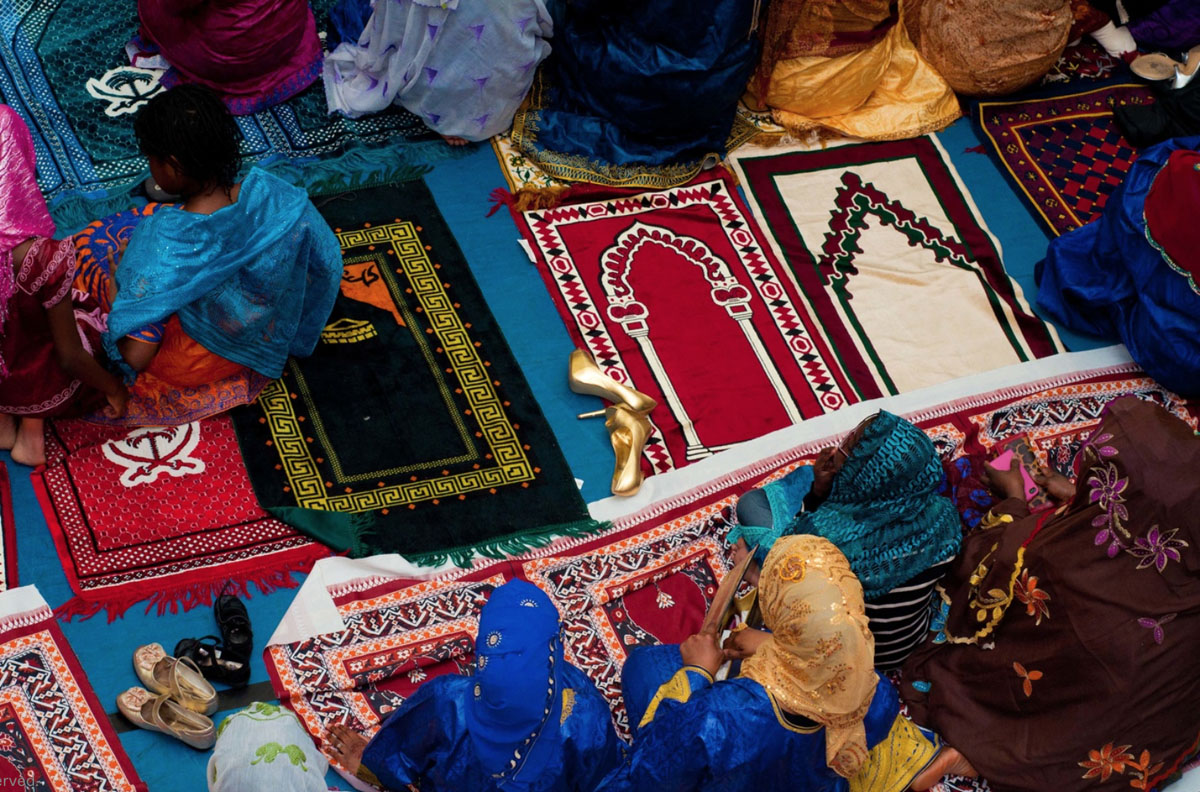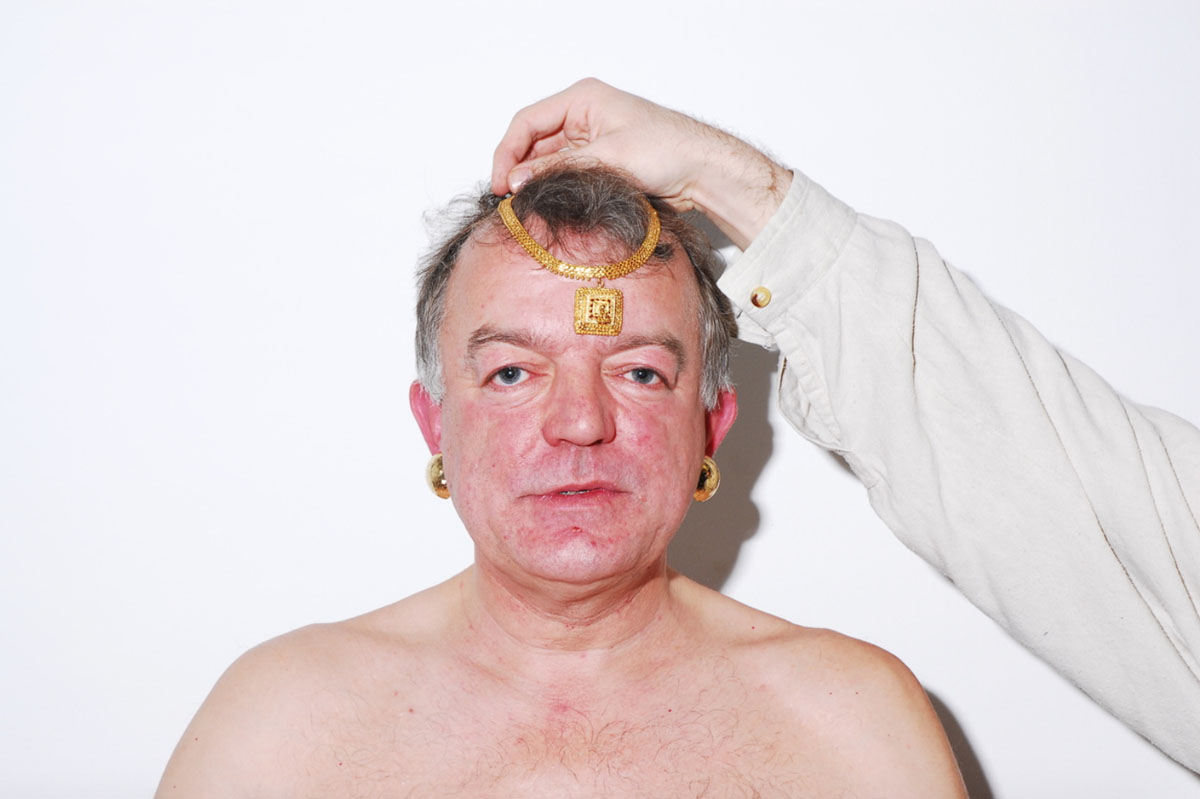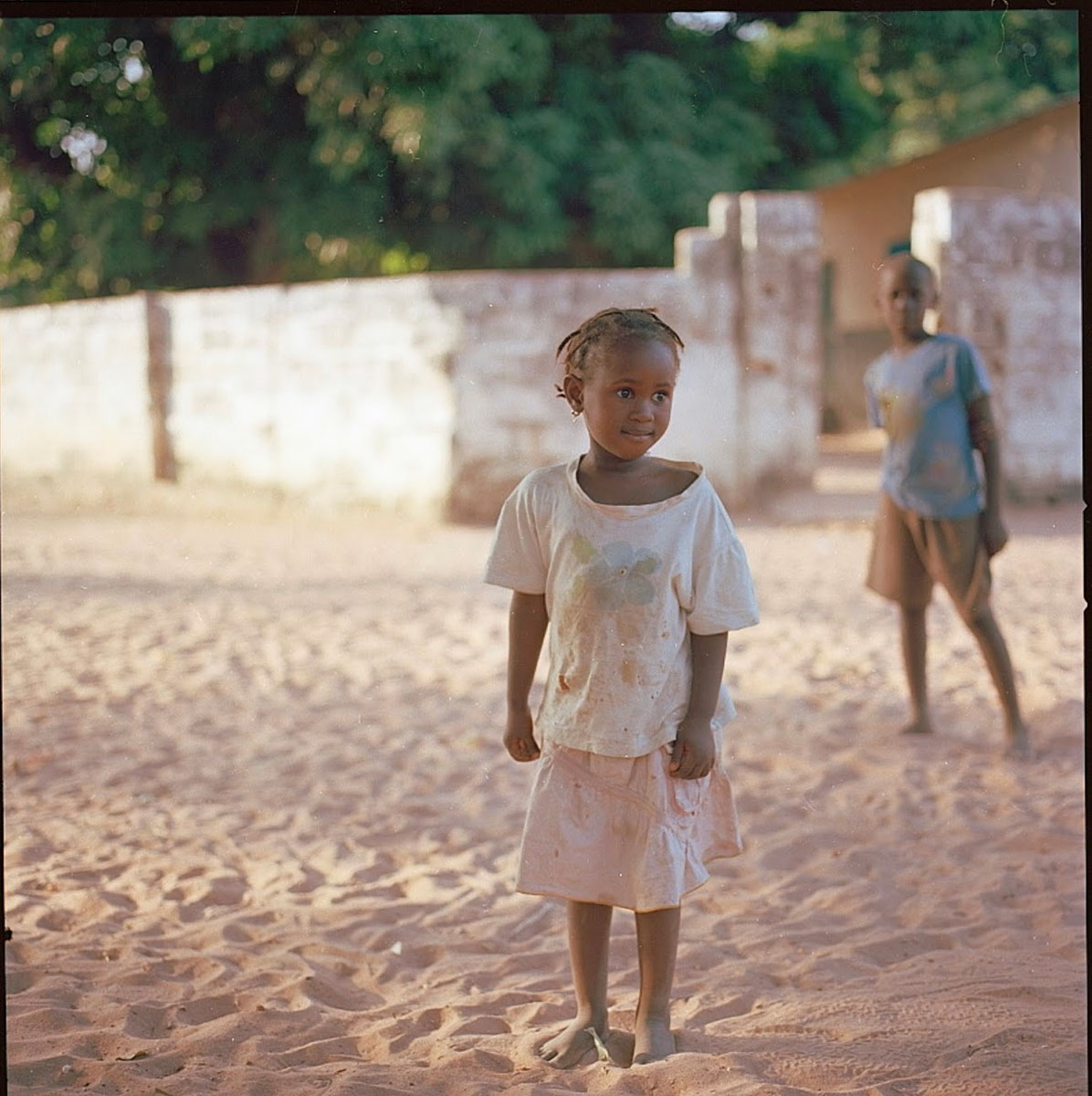Khadija Saye was nearing international acclaim when she died at Grenfell Tower. Her friends share their memories and urge for more support for artists from non-privileged backgrounds
“It’s been a real journey, but mama, I’m an artist exhibiting in Venice and the blessings are abundant!,” Khadija Saye wrote in a Twitter post about her series, Dwelling: in this space we breathe, which forms part of this year’s Venice Biennale. Saye described the images, created as wet plate collodion tintypes, as exploring “the migration of traditional Gambian spiritual practices and the deep rooted urge to find solace within a higher power.” Her inclusion in the Diaspora Pavilion was to be a catapult to international recognition for 24-year-old Saye. Tragically, she died in the Grenfell Tower fire, alongside her mother, Mary Mende, on 14 June 2017. The blaze that engulfed the West London tower block took the lives of at least 80 people and has started a debate around the lack of adequate social housing and the wider inequalities within British society.
“The Dwelling series was met with critical acclaim after its unveiling,” says artist Nicola Green, who had been a mentor to Saye over the last three years. “Khadija came back from Venice to offers from galleries to exhibit her work. She also had plans to explore the subjects raised by Dwelling even further,” Green adds. “It is impossible to believe that such a positive force of energy and power is gone from this world."
“There wasn’t any kind of cynicism, just generosity, even with her smile”
Born in London to Gambian parents, Saye lived and worked in the 20th-floor flat of the West London tower block. Having attended a local school, at age 16 Saye earned a scholarship to the prestigious Rugby School. She went on to complete a degree in Photography at University for the Creative Arts in Farnham. After graduating in 2013, her first major show was for the Discerning Eye competition for which Green had picked Saye’s series Crowned to be exhibited before even meeting her. The series explored the identity and power of black women through images of their hair. Saye wrote on Facebook that she had produced the portraits “with £0, just some black velvet with beautiful friends and family.” Green remembers “she came to the opening night so excited. She stood with her mother Mary next to her art work brimming with enthusiasm.”
The young artist later began working for Green as a studio assistant and the two formed a close bond. Saye’s continued to explore Gambian traditions and faith in her work, as represented in her series Eid. In another, Home.Coming, she captured her experience of traveling to Gambia with a series colourful portraits.
Her co-mentor for the Venice Biennale, artist Dave Lewis, recollects that she was a fan of American artist Lorna Simpson’s work, who in turn saw her exhibit in Venice and invited Saye to spend time at her studio in New York. On getting the call, Green added “she made a squeaking sound and said, ‘I’m so sorry, I actually don’t know what that sound is.’ She paused, and before laughing with uncontrollable joy, and continued, ‘I can only respond with sounds from my soul.’”
“I think it is fair to say that Khadija was a quietly confident person,” recalls Lewis of the young artist who took a careful, measured approach to her projects. “She listened intently and processed what was being said before she responded in a direct and astute manner. In this she was way beyond her years,” Lewis adds. “We spent hours upon hours discussing the Biennale. There were some pensive moments that was only natural given the statue of the event… I think, like most artists, she wanted to be seen as credible. Do justice to the opportunity she was given. What she definitely was not expecting was the success she encountered with her wet collodion plates. I think this took her by complete and total surprise.” During their last session together, Lewis met Saye at a pub near her home. The artist set out ambitious plans for her trip to New York, and an additional visit to Gambia where she wanted to produce a much larger body of work.
“There wasn’t any kind of cynicism, just generosity, even with her smile,” say fellow artist Larry Achiampong, who exhibits alongside Saye at the Biennale. “She was working with photography in a way that I don't think many people are, especially if you think of manual photography. She wanted to take that somewhere in a big, grand way.” Achiampong and Saye connected over both being of British-African descent and had been planning to bring their mothers to Venice. “We were making our families proud, we were making our mothers proud, and we talked about how we would have the chance to take them out in the summer and be able to say, ‘Hey mum this is what your son or your daughter has produced as a result of your struggling.’” Unfortunately Saye’s mother never made it before their deaths.
Two talent funds have now been established in honour of Saye, who was buried last month at a cemetery in Essex. The Khadija Saye Memorial Fund, set up by Green, Lewis and Ingrid Swenson, will support emerging artists from disadvantaged backgrounds; and Creative Access has a fund for paid internships for young BAME talent in the arts.
But friends say more needs to be done. “Khadija was creating incredible work but why is it that her work only becomes important when she's dead,” asks Achiampong. He believes there needs to be a “look at the infrastructure or the lack thereof” for black British artists and those from lower working class backgrounds to succeed. “Those of us who signed up for the Diaspora Pavilion did so because there is an issue with not only the nationalism that takes place within the pavilions but also the wider question of ‘Are some of us really likely to be asked to represent the UK or Britain when it comes to a Pavilion within our careers?’ Highly unlikely.”
Tate Britain’s decision to put up just one image, Saye's Sothiou (2017), in the gallery's memorial space felt disingenuous to some. The Sunday Times art critic Waldemar Januszczak had tweeted Maria Balshaw, the new director of the Tate, suggesting the gallery display Saye’s work. She replied: “Our thoughts are with everyone who knew her. We will be marking her creativity by showing one of her works @tate Britain.” Achiampong says that this is not enough: “If you are going to show someone's work within the Tate building, do an exhibition, don't just put something on the side. I don't think that is respecting and really honouring somebody's memory.”
Tottenham MP David Lammy, who is married to Green, called for arrests to be made following the fire at Grenfell Tower, labelling the disaster “corporate manslaughter”. In a letter to Commissioner Cressida Dick, Lammy wrote: “My friend who lost her life was a talented artist, but she was a young, black woman making her way in this country and she absolutely had no power, or locus, or agency.” In another letter published in the Guardian and signed by Diaspora Pavilion artists, curators and mentors, fellow colleagues demanded a criminal investigation be pursued for Saye and all Grenfell Tower victims.
A service held last week to pay tribute to Saye and her mother was attended by hundreds of well-wishers and family members - a testament to Saye’s warmth and place within the community. And despite the anger and sorrow, friends are finding solace amongst each other. Within Diaspora Pavilion artists this has been through a WhatsApp group offering a space to reflect on emotions.
“I relished the qualities she possessed – qualities that made her stand out,” Anthony Luvera, Saye’s former lecturer at UCA, now a course director of photography at Coventry University, told the British Journal of Photography. “Her warm and genuine interest and connection to other people’s stories, particularly those who come from marginalised backgrounds or immigrant origins; the astuteness of her questioning; her ability to clearly and creatively express herself; the gentleness of her presence; and, most especially, the brightness of her laughter – Khadija’s life, her talents and the work she left behind, should continue to be celebrated widely.”
Find details on the Khadija Saye Memorial Fund here
Diaspora Pavilion is on show until 26 November 2017 at the Palazzo Pisani S. Marina, Venice.
Khadija Saye's images are courtesy of Nicola Green
Visit Khadija Saye
Published on 26/07/2017








